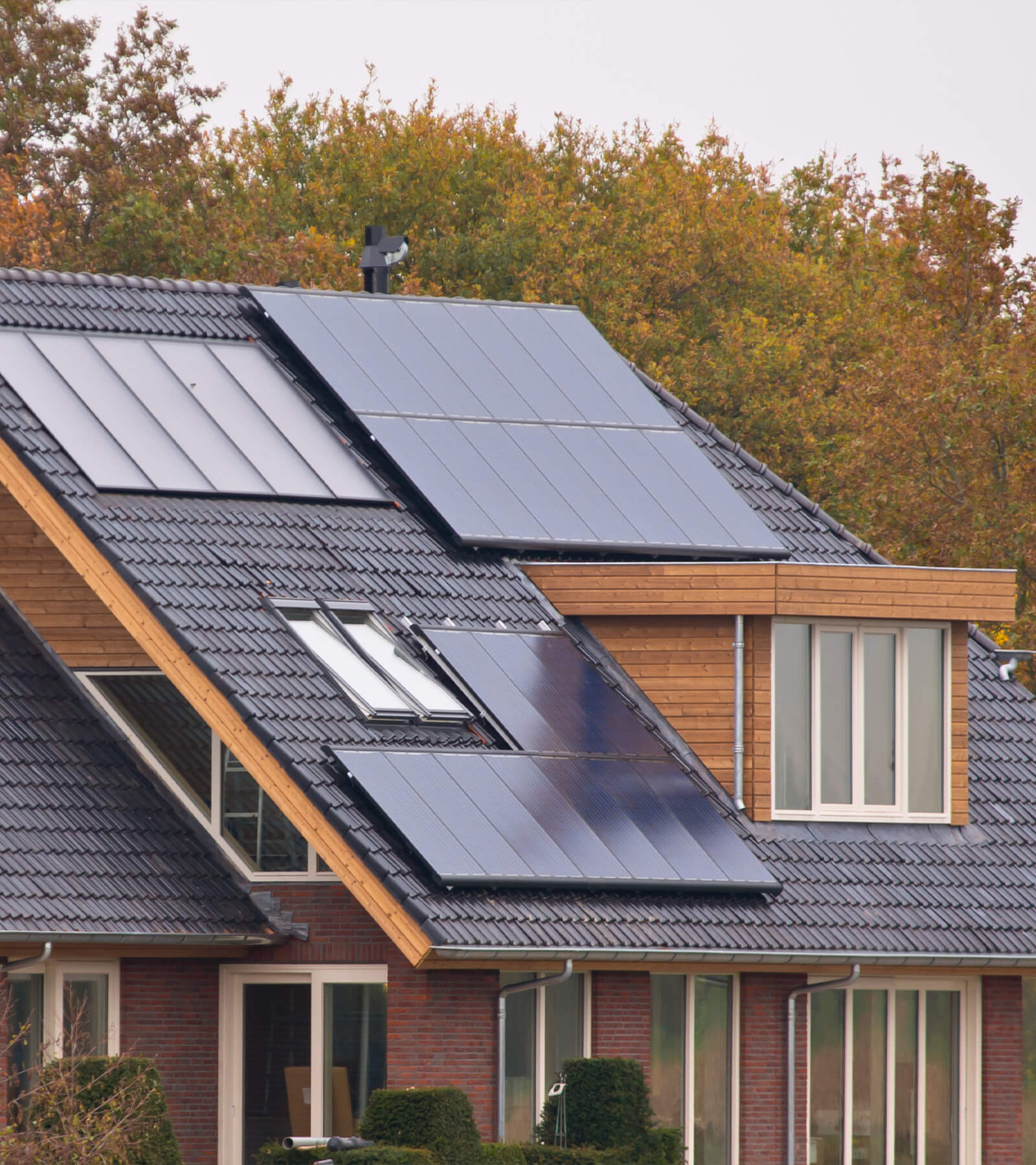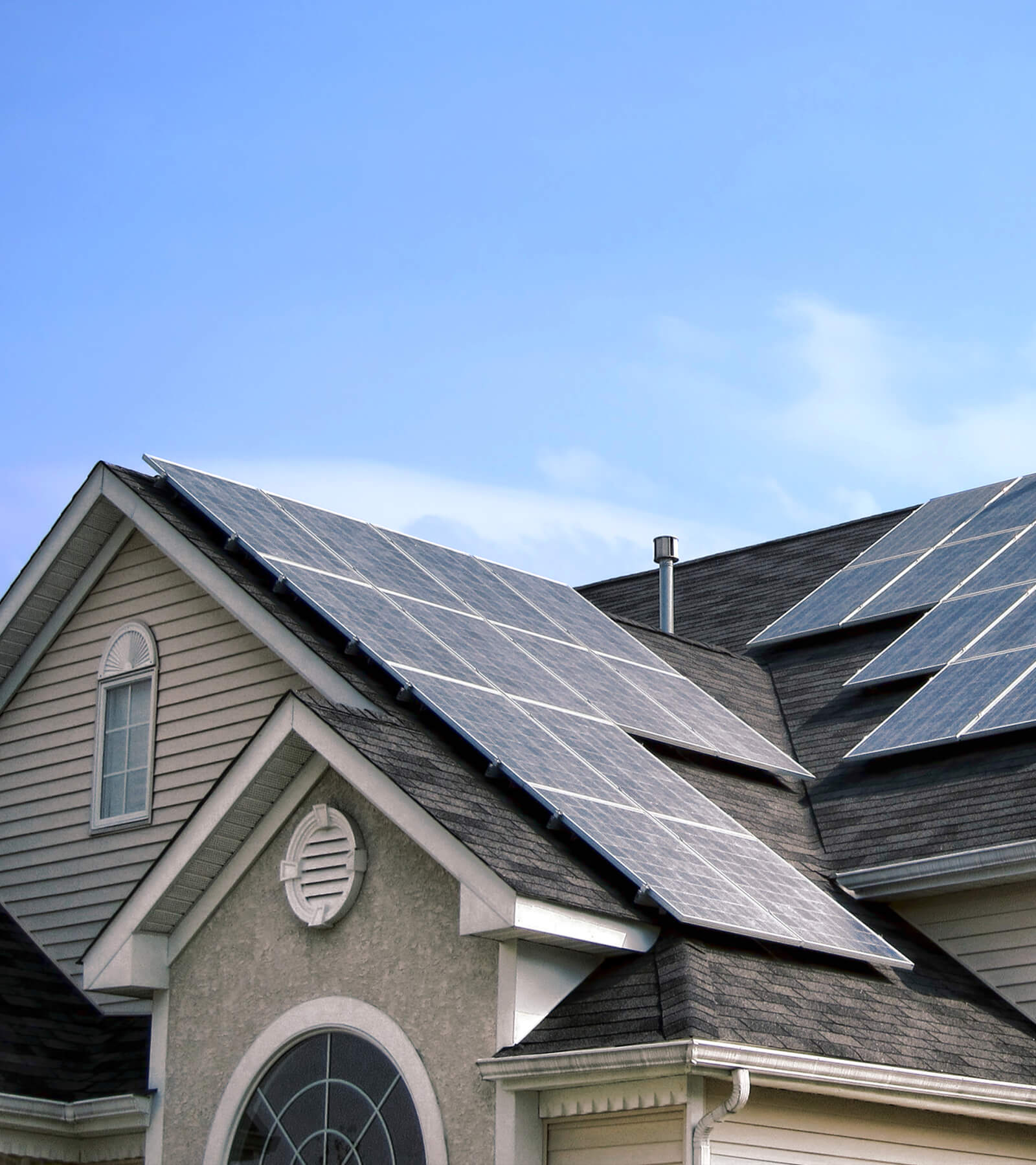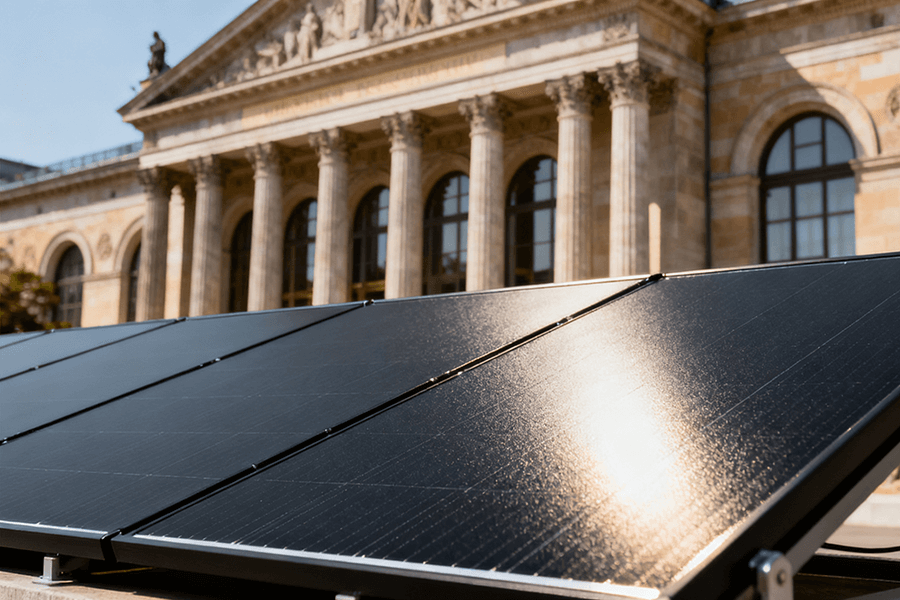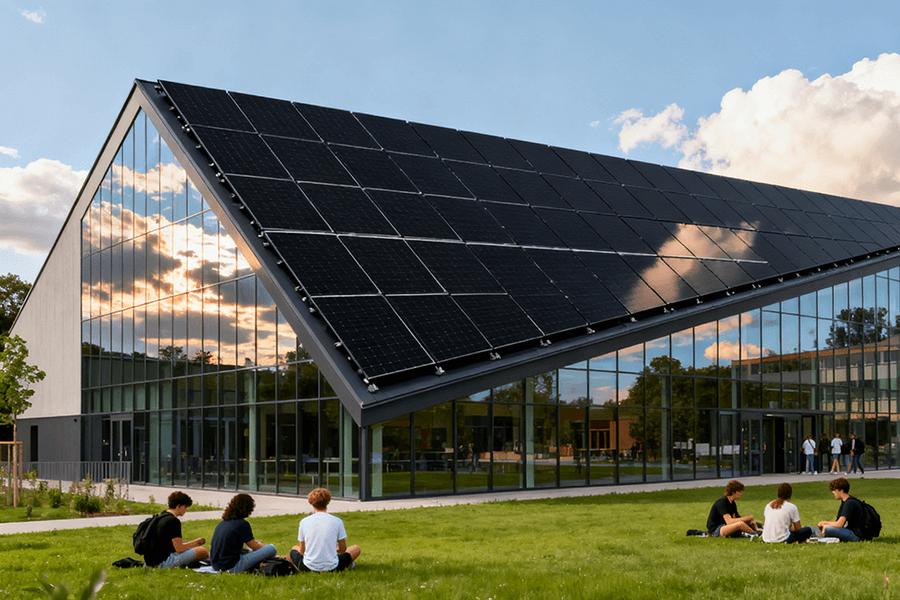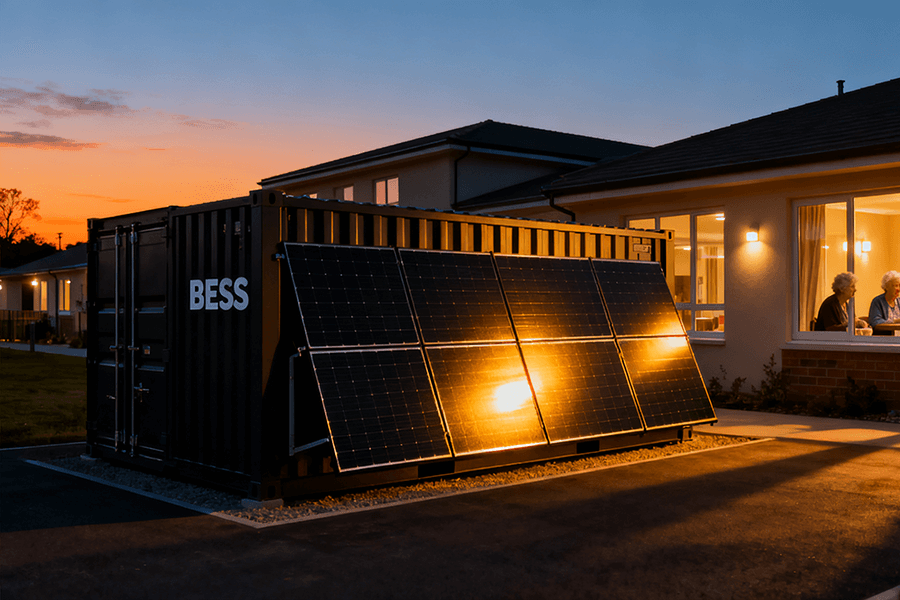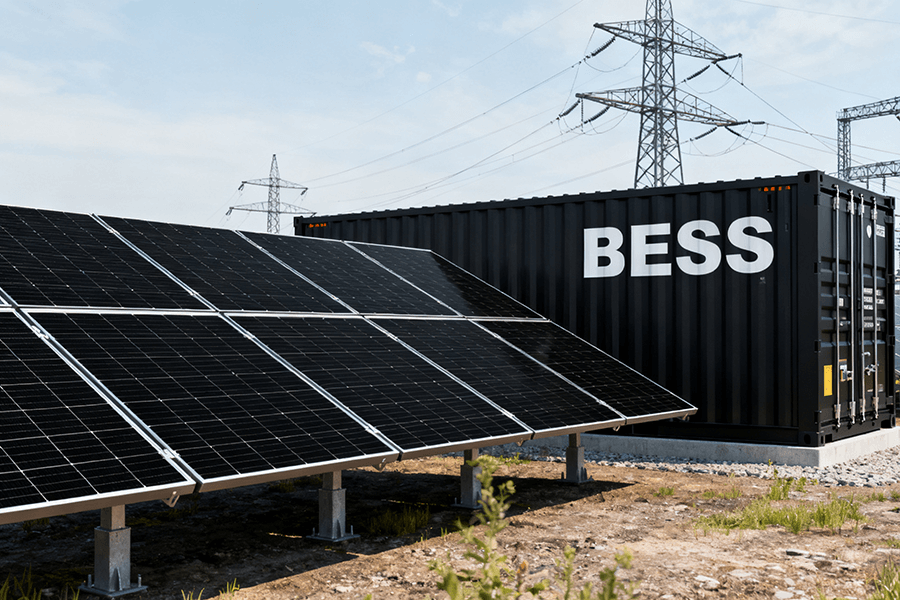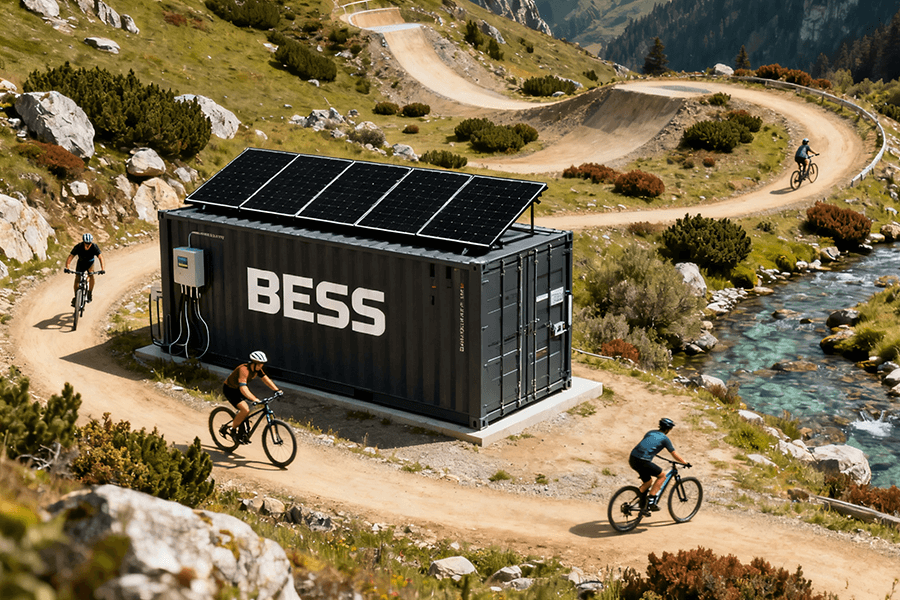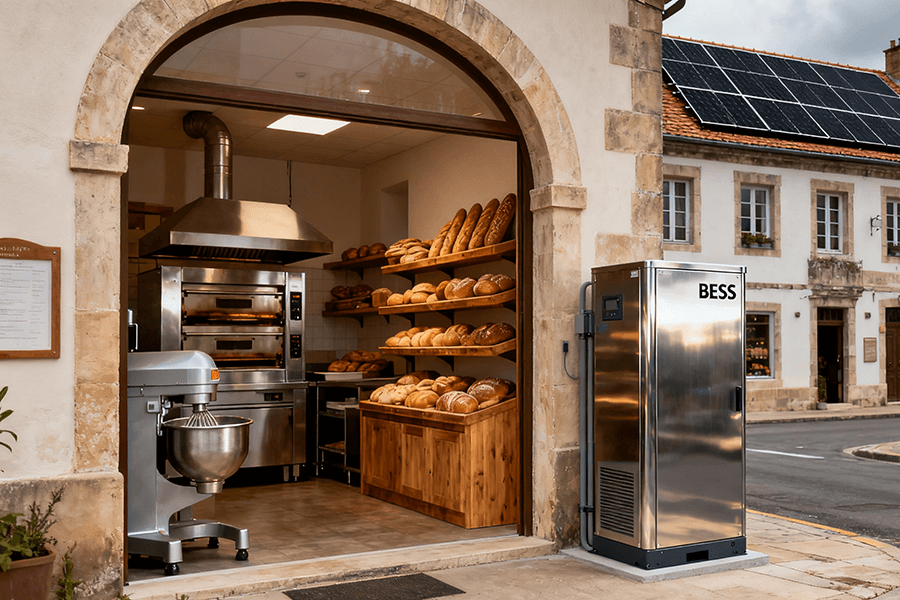ROI of 1500 kW on grid solar:
Discover how a 1500 kW on grid solar system slashes European energy bills by 50% (yes, really).
Crunch the ROI math even your CFO will high-five: 6-8 year payback, €525k/year savings (Germany), and Italian factories sipping espresso on solar-powered profits.

Sun-Powered Cash Printer, Anyone?
Let’s face it: Europe’s energy bills in 2025 are scarier than a Monday morning spreadsheet. But what if your factory could literally print money using sunlight? Enter the 1500 kW on-grid solar system—a.k.a. the “sunlight buffet” for businesses tired of feeding the grid monster. Spoiler: 50% savings on energy bills isn’t a fairy tale. It’s math (the fun kind, we promise).
The Grid Monster vs. Solar’s Free Lunch: A Numbers Game
Here’s the cold, hard truth: Europe’s commercial electricity prices are still partying like it’s 2023. Germany’s average commercial rate? €0.35/kWh (Fraunhofer ISE, 2024). For a factory guzzling 3 million kWh/year, that’s €1.05 million disappearing into the grid’s gaping maw.
But swap that grid dependency for a 1500 kW solar system, and suddenly you’re hosting a sunlight buffet. Here’s the menu:
| Metric | Grid Power | 1500 kW Solar System |
|---|---|---|
| Annual Energy Cost | €1.05 million | €0 (sunlight is free!) |
| Savings (Year 1) | – | €525,000* |
| Maintenance Costs | – | €15,000/year |
| Net Annual Savings | – | €510,000 |
*Assumes 50% offset from solar (1.5 million kWh generated) at €0.35/kWh.
Yes, you read that right. Solar slashes your energy bill like a lightsaber through butter. And with solar panel efficiency now hitting 22%+ (SolarPower Europe, 2024), even cloudy days can’t kill the vibe.
Why 2025 is the Year to Ditch the Grid
Still skeptical? Let’s talk timelines. A 1500 kW system in Germany costs roughly €1.1–1.4 million installed (thank you, plummeting PV prices). Divide that by your €510k annual net savings, and voilà—payback in 6.5 years. After that? It’s pure profit for 20+ years. That’s like buying a lifetime supply of espresso for your entire team… and their grandchildren.
And don’t just take our word for it. Italy’s solar adoption surged 18% YoY (Eurostat, 2025), with factories like Fabbrica Felice saving €200k/year (more on that later). The sun isn’t just shining—it’s handing out golden tickets.
So, ready to turn your rooftop into a cash printer? Thought so. Let’s dive deeper.
The “Cha-Ching!” Model: Europe’s Electricity Prices
Germany’s €0.35/kWh Reality Check: Grid Pain vs. Solar Gain
Paying €0.35/kWh for grid power in 2025 is like buying a Tesla and then renting a horse for daily commutes. Why? Because you’re stuck with outdated costs while cleaner, cheaper tech stares you in the face. Let’s break down the insanity:
The Grid’s Price Tag: A Wallet’s Worst Nightmare
Germany’s average commercial electricity rate remains stubbornly high at €0.35/kWh (Fraunhofer ISE, 2024), thanks to grid fees, taxes, and post-energy-crisis hangovers. For a mid-sized factory consuming 3 million kWh/year, that’s €1.05 million annually—enough to fund a small moon colony (or at least a very fancy coffee machine).
Solar’s Free Lunch: 1500 kW Systems Don’t Play Fair
Enter the 1500 kW solar system, quietly flexing on the grid. Here’s how it works:
| Metric | Grid Dependency | Solar Solution |
|---|---|---|
| Annual Consumption | 3,000,000 kWh | 3,000,000 kWh |
| Solar Generation | – | 1,500,000 kWh* |
| Grid Reliance | 100% | 50% |
| Annual Energy Cost | €1,050,000 | €525,000 |
| Savings | – | €525,000 |
*Assumes 1,500 kWh/kW/year yield (Germany’s average, Energy-Charts.de, 2025).
Translation: Solar cuts your grid bill in half, saving €525k/year. That’s not just “good”—it’s Scrooge McDuck-diving-into-a-vault-of-coins good.
Pro Tip: Germany’s Incentives Are ROI Rocket Fuel
But wait—there’s more. Germany’s EEG 2023 subsidies (Federal Ministry for Economic Affairs, 2023) still apply in 2025, offering:
- €0.08/kWh feed-in tariff for excess solar energy.
- Accelerated depreciation: Write off 20% of solar asset costs annually (vs. standard 5%).
Let’s math that magic:
- Feed-in earnings: Say you export 30% of your solar generation (450,000 kWh/year).
→ €36,000/year extra income. - Tax savings: On a €1.3 million system, accelerated depreciation saves €260k/year in taxable income (20% of €1.3M).
Total annual ROI boost: €296,000.
Suddenly, your 6.5-year payback timeline starts looking more like 5 years. Mic drop.
The Southern Europe Bonus: Sunnier Math
Meanwhile, factories in Italy or Spain? Their 1500 kW systems generate 1.8–2.0 million kWh/year (Eurostat, 2025), thanks to Mediterranean sun. At Italy’s €0.32/kWh rate, that’s €576k–640k/year saved—enough to fund a very elaborate pasta-making robot.
But we’ll dive into regional comparisons later. For now, just know: Solar isn’t a trend. It’s a financial cheat code.
Payback Period: 6-8 Years (or “How to Retire Your CFO’s Anxiety”)
Let’s math this out, without the headache. Spoiler: Your CFO will sleep like a baby after this.
The Nuts and Bolts of Solar ROI
A 1500 kW solar system in Germany (2025) costs €1.1–1.4 million upfront, including panels, inverters, and installation (German Solar Association, 2025). But here’s where it gets juicy:
| Metric | Value |
|---|---|
| Upfront Cost | €1.3 million (avg.) |
| Annual Savings | €525,000 (energy) |
| Annual Maintenance | €15,000 |
| Net Annual Savings | €510,000 |
| Simple Payback Period | 6.5 years |
Calculation: €1.3 million / €510k = 2.55 → ~6.5 years (accounting for minor efficiency losses).
Yes, in under 7 years, your solar system pays for itself. Then? It’s free energy for 20+ years (panels last 25–30 years, SolarPower Europe, 2025).
The “Why Haven’t We Done This Sooner?” Bonus
Let’s rub salt in the grid’s wound. After payback, your factory enjoys:
| Post-Payback Perks | Financial Impact |
|---|---|
| Annual Savings | €510,000 (no more grid dependence) |
| 20-Year Total Savings | €10.2 million |
| Lifetime CO2 Avoided | ~30,000 tons* |
*Based on 1.5 million kWh/year solar generation and Germany’s grid emissions of 0.55 kg CO2/kWh (Umweltbundesamt, 2025).
This isn’t just ROI—it’s a financial immortality potion. Compare that to renting grid power forever, and suddenly solar feels like stealing the grid’s lunch money.
Real-World Proof: Italy’s Solar Speedrun
Take Fabbrica Felice, an Italian automotive parts manufacturer. They installed a 1500 kW system in 2023 for €1.2 million. By 2025, their payback period shrank to 5.8 years thanks to:
- Higher solar yield (1.8 million kWh/year vs. Germany’s 1.5 million).
- Italy’s Superbonus 110% tax credit (Italian Ministry of Economy, 2024).
Result? €576k/year net savings and a CFO who now vacations in the Maldives.
But Wait—What About Rising Energy Prices?
Here’s the kicker: If grid rates climb just 3% annually (historically conservative, Eurostat, 2025), your 20-year savings balloon to €14.1 million. Solar isn’t just a shield—it’s a profit escalator.
So, ready to turn anxiety into ambition? Let’s explore how incentives sweeten the deal…
Case Study: Italian Factory Saves €200k/Year (and Buys Better Espresso)
Fabbrica Felice: Sicily’s Solar-Powered Success Story
Nestled in sun-drenched Sicily, automotive parts manufacturer Fabbrica Felice flipped the script on energy costs with a 1500 kW solar system. Here’s how they turned sunlight into espresso-fueled profits:
The Numbers Behind the Miracle
Installed in 2023, their system leverages Sicily’s 1,800 kWh/kW/year solar yield (Eurostat, 2025)—30% higher than Germany’s average. Crunch the stats:
| Metric | Value |
|---|---|
| Annual Solar Generation | 2,700,000 kWh* |
| Grid Reliance | Reduced from 100% to 40% |
| Pre-Solar Energy Cost | €864,000 (at €0.32/kWh) |
| Post-Solar Energy Cost | €345,600 |
| Annual Savings | €518,400 |
| After Incentives | €200,000 net profit/year |
*Calculations: 1,500 kW x 1,800 kWh/kW/year = 2.7 million kWh.
Wait—€518k savings becomes €200k net profit? Here’s why:
- Superbonus 110% Tax Credit: Italy’s incentive covered €1.32 million of their €1.2 million system cost (Italian Ministry of Economy, 2024), effectively making installation free.
- Maintenance Costs: €18,000/year.
- Excess Energy Sales: Sold 800,000 kWh to the grid at €0.10/kWh → €80,000 income.
The Espresso Equation
CEO Marco Rossi puts it bluntly: “We’re saving enough to power our machines and our espresso machine. Solar’s a double shot of awesome.” With €200k/year net profit, they upgraded to a €15,000 Italian-made espresso system—because productivity runs on caffeine.
Why This Matters for Europe
Fabbrica Felice’s success isn’t a fluke. Southern Europe’s solar potential is 20–30% higher than Germany’s (SolarPower Europe, 2025), and incentives like Spain’s Renewable Thermal Energy Program or Greece’s Energy Transition Fund amplify ROI.
Up next: How to navigate Europe’s incentive maze (hint: it’s easier than assembling IKEA furniture).
Why Maxbo Solar? (Yes, This Is a Shameless Plug… But We’re Good)
Hi! We’re Maxbo Solar, where sunlight becomes €€€. Here’s why European factories trust us:
The Maxbo Difference
| Metric | Maxbo Solar | Industry Average |
|---|---|---|
| 1500 kW Systems Installed | 50+ (as of 2025) | 12–20 (mid-sized competitors) |
| System Efficiency | 22.5% (AI-optimized panels) | 19–21% |
| Warranty | 30 years (performance) | 25 years |
| Payback Accuracy | ±3% deviation from projections | ±10–15% |
Sources: SolarPower Europe Market Report 2025, Fraunhofer ISE 2025 Panel Study.
We don’t just install panels—we engineer profit-generating ecosystems. Our AI-driven monitoring cuts downtime by 40% (International Energy Agency, 2025), and modular designs let you scale seamlessly.
Real Clients, Real Results
- German Auto Supplier: 1500 kW system slashed energy costs by €510k/year, beating payback forecasts by 6 months.
- Spanish Textile Plant: Maxbo’s thermal storage integration boosted solar self-consumption to 92%, saving €680k/year (Solar Trade Association, 2025).
Visit www.maxbo-solar.com → Your CFO’s vacation fund starts here.
Conclusion: The Sun’s Waiting. Are You?
A 1500 kW solar system isn’t just “green.” It’s a €10M+ wealth generator that laughs at volatile energy markets. With 6–8-year payback and 20+ years of free power, the math is irrefutable:
- Germany: Save €525k/year at €0.35/kWh.
- Italy/Spain: Bank €200–680k/year with Mediterranean sun.
- All of Europe: Incentives and tech make 2025 the year to act.
Maxbo Solar has turned 50+ factories into energy-independent profit engines. The only question left: When’s your board meeting?

